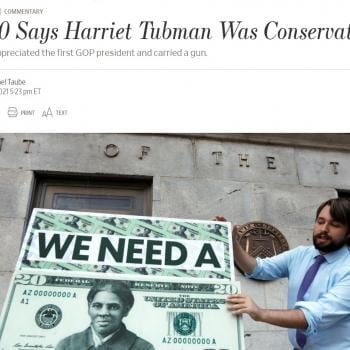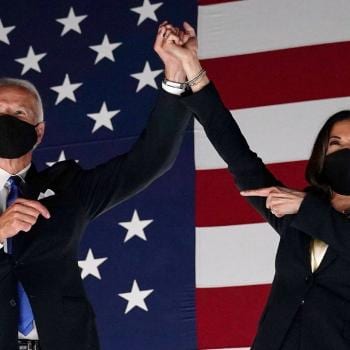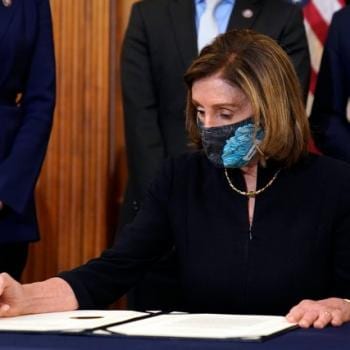In doing research for an earlier post on race and policing, I came upon a bizarre piece of conspiracy mongering a conservative website, the American Observer. The article in question was posted last November. Check it out:
The FBI’s own current (November 2015) list of most wanted murder suspects in the US . . . contains 71 suspects—of which only six are actually white, as can be seen from their mugshots. Some 51 of the remaining suspects are nonwhite Hispanics. Nonetheless, the FBI has classified all 51 of these people as “white.” (The remainder are correctly classified as “black.”)
. . .
The deliberate misclassification is done with the express purpose of boosting the number of crimes which the FBI ascribes to its “white” category. This is done because the federal statisticians are aware that if they correctly identified these Hispanics as nonwhite, then it would be impossible for even the controlled media to hide the overwhelming nonwhite crime plague.
That’s right, The New Observer argues that the FBI is classifying wanted Hispanic criminals as white in order to hide “the overwhelming nonwhite crime plague.” This claim is bizarre. Last week I took my children to a new doctor. In filling out all of the forms, I had to put down the children’s race. I marked “white” and then, in the very next question, I had to specify Hispanic or non-Hispanic. Do you know why? I didn’t until a few years ago, when I assisted with a class on immigration history. Legally and according to the U.S. government, Hispanics are classified as white. In other words, it’s not just in crime statistics, as the author of the above quoted American Observer article seems to think. The classification of Hispanics as white occurs across the board. Why is this, you ask? Because of the Treaty of Guadalupe Hidalgo, of course.
The year was 1848 and the Mexican government was signing a peace treaty with the U.S., bringing an end to the Mexican-American War. As part of the agreement, Mexico ceded its northernmost territories—land that is now now Arizona, New Mexico, California, Nevada, Utah, Colorado, and Wyoming—to the United States. But that land was already inhabited. What would happen to the Mexican citizens living on that land when it became part of the United States? Would they become American citizens? Or would they be treated more like Native Americans, constantly relocated and bereft of the rights afforded white Americans of European descent?
This took some wrangling. The Mexican government wanted to make sure that their citizens living in the ceded area would become full American citizens, but the government also wanted to ensure that those who preferred to live in Mexico as Mexican citizens could do so. So they struck a deal. Those Mexican citizens living in the territory changing hands would have one year to move into Mexico’s new borders, where they would retain their Mexican citizenship. If they chose to stay, they would be considered American citizens.
There was just one eensy teensy problem. By law, you had to be white to be a U.S. citizen. It was 1848 after all. The Naturalization Act of 1790 read as follows:
Be it enacted by the Senate and House of Representatives of the United States of America, in Congress assembled, That any Alien being a free white person, who shall have resided within the limits and under the jurisdiction of the United States for the term of two years, may be admitted to become a citizen thereof …
While more detail was added to the statute in 1795, the requirement that only free white persons could obtain citizenship remained. In order to honor both the Treaty of Guadalupe Hidalgo and its own naturalization law, the U.S. government had to classify the formerly Mexican citizens who resided in its new territory as white. And that—yes—is why Hispanics are listed under white on the census and other forms, and in the U.S. government’s official accounting of statistics, etc.
What Is Whiteness?
I’m not going to leave it there, though, because at this point you probably want to know more. How did our law change? When did we start including non-whites as citizens? As you might imagine, there was a bit of a problem after the Civil War. Were the freed slaves U.S. citizens? They certainly weren’t white! In 1868 the Fourteenth Amendment was passed to settle this question:
All persons born or naturalized in the United States and subject to the jurisdiction thereof, are citizens of the United States and of the State wherein they reside.
The Fourteenth Amendment created birthright citizenship, and allowed nonwhites born in the U.S. to be considered citizens, but what about nonwhite immigrants who wanted to become naturalized citizens? Here, the law did not change. Naturalization was still limited to free white persons. The 1870 Naturalization Act allowed for those of African descent to become naturalized U.S. citizens, but it otherwise limited naturalization to free white persons, purposefully excluding Asians, among others. The 1906 Naturalization Act did not change this requirement, maintaining a system that offered naturalization to free white persons and those of African descent.
What happened next, you ask? Have you heard of Takao Ozawa v. United States, a case decided by the Supreme Court in 1922? Probably not! You see, while naturalization was limited to free white persons and those of African descent, what white meant exactly was a bit fuzzy. Given this, Takao Ozawa, a Japanese man who had lived in the United States for two decades, sought naturalization under the argument that he was in fact white. Ozawa was a good candidate for a case of this sort. He had graduated from high school in the U.S., attended the University of California, and converted to Christianity. He spoke English exclusively in his home and with his children, whom he sent to Sunday School.

The Supreme Court, in a unanimous ruling, found that “the words ‘white person’ were meant to indicate only a person of what is popularly known as the Caucasian race,” which excluded the Japanese. It’s worth noting that Ozawa sued for U.S. citizenship because the state of California had passed laws barring those ineligible for citizenship—such as himself—from owning land. I bet you never learned about that one in your high school history class.
At this point, then, the U.S. limited naturalization to those of African or Caucasian descent. But what did Caucasian mean, exactly? That’s a good question! Have you heard of United States v. Bhagat Singh Thind, decided by the Supreme Court in 1923? Probably not. Bhagat Singh Thind was an immigrant from India and a WWI veteran who had served in the U.S. army. When he heard about the Supreme Court’s decision white meant Caucasian, he decided to seek naturalization based on his ancestry and the the historical geographical origins of Caucasians.
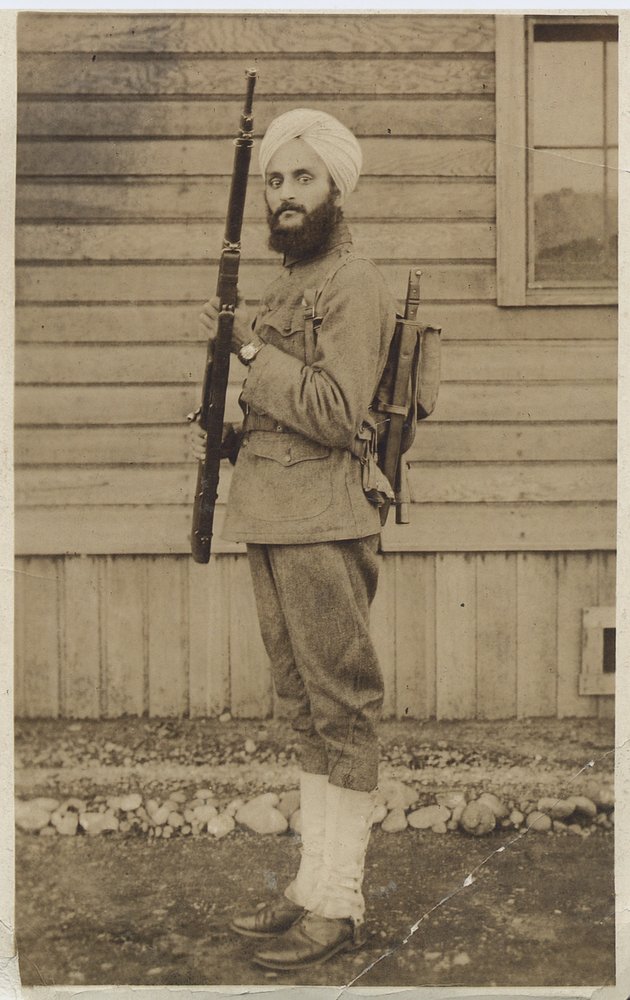
The Supreme Court, once again unanimous, disagreed. They found that:
“What we now hold is that the words “free white persons” are words of common speech, to be interpreted in accordance with the understanding of the common man, synonymous with the word “Caucasian” only as that word is popularly understood.”
In other words, white meant Caucasian, and Caucasian meant whoever people think of as Caucasian. It was an artificially invented distinction designed to draw racial lines and deny citizenship to men like Takao Ozawa and Bhagat Singh Thind. In case you’re curious, Thind went on to earn his PhD and marry a white woman, with whom he had two children, Tara and David. He finally obtained U.S. citizenship in 1935, after Congress made all WWI veterans eligible for citizenship. But what of everyone else?
WWII made discriminating against nonwhite ethnic groups unfashionable. I know that sounds flippant, but it’s true—in the aftermath of WWII, people looked at what happened to the Jews and realized that it was fucked up to deny citizenship to entire groups of people based on their ethnic or racial backgrounds. A lot of things changed as a result of WWII—the United Nation was founded in 1945, and the Universal Declaration of Human Rights was drafted and signed three years later. It was in this context that Congress passed the Immigration and Nationality Act of 1952, ending the United States’ 172-year-old race-based naturalization requirements. “The right of a person to become a naturalized citizen of the United States shall not be denied or abridged because of race or sex,” the act read. Unfortunately, though, while it repealed the race-based naturalization requirements, the act maintained the country’s harsh and restrictive immigration quota system.
We haven’t talked about the quota system, have we?
Quotas, Quotas, Everywhere
Before 1924, our immigration policy was very open, unless you were Chinese, or, eventually, simply Asian. Those groups were excluded almost entirely, but no quotas were placed on immigrants from other areas of the world. This changed with the Immigration Act of 1924 (following the Immigration Restriction Act of 1921), which cut immigration severely. This act restricted annual immigration from any given country to 2% of the number of foreign-born individuals from that country who had been living in the U.S. in 1890. Why 1890? Because before 1890 most immigrants were from northern and western Europe while after 1890 most immigrants were from southern and eastern Europe, and southern and eastern European immigrants were viewed as inferior by many Americans. Using 1890 allowed them to severely restrict immigration from those areas while allowing a larger amount of immigration from the parts of Europe considered racially superior. (Check out this graph.)
The U.S.’s new immigration restrictions need to be understood in the context of the rise of the Ku Klux Klan. People often associate the Klan primarily with racism and terror against black people, and this was indeed the primary focus of the first wave of the Klan, during Reconstruction. During the 1920s the second wave of the Klan, though, had many targets, including blacks, Catholics, and eastern European immigrants, among others. The Klan was not an isolated presence, either. In fact, their dominance in states like Indiana was well known.
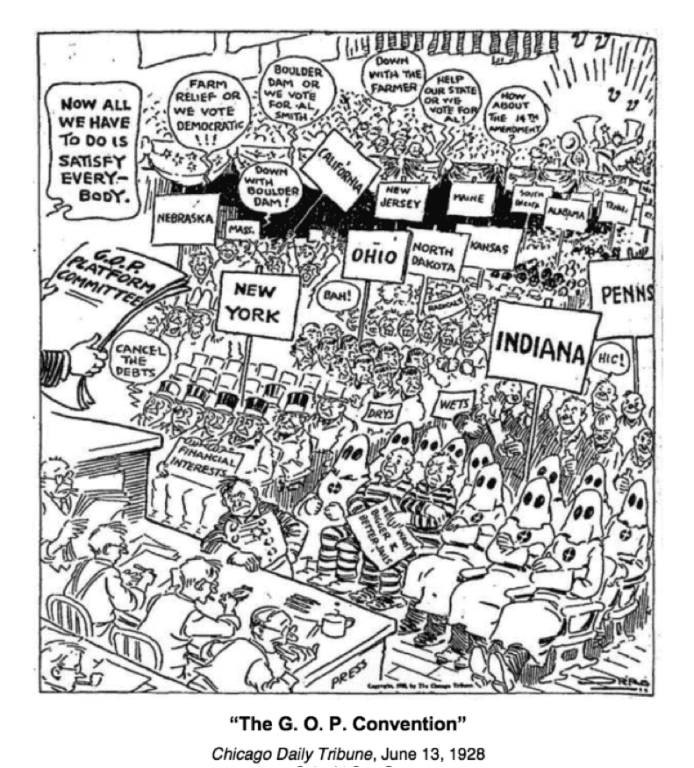
There’s something else I bet you didn’t know. The United States obtained the Philippines from Spain in 1898 and fought a bloody war to subdue a local independence movement. Actually, that you probably did know. What you probably didn’t know is that during U.S. colonization Filipinos were considered U.S. nationals (though not U.S. citizens), and were thus free to travel to live and work in the United States, exempt from the harsh immigration quotas imposed on other countries. In fact, so many Filipinos traveled to the West Coast to work that a strong anti-Filipino nativist movement grew up. The result was that the U.S. passed a law initiating the Philipinnes’ independence process in 1934, and simultaneously limiting Filipino immigration to 50 per year. That’s right, 50 people. And yes, our motivation for granting the Philippines independence was motivated at least partially (and perhaps even primarily) by a desire to stem the flow of Filipino migrants.
Next came WWII. The United States’ immigration quotas may have played a role in Anne Frank’s father’s failure to obtain visas to bring his family to the U.S. Anti-semetism, which could lead to a refusal to issue visas even when quota spots remained, likely also contributed. The doors of U.S. immigration did not budge in the face of chaos abroad. After WWII, though, the plight of war refugees and the recent memory of what had happened when countries closed their doors to Jews fleeing Hitler made the United States’ restrictive immigration policies look bad. This did not, however, mean immediate wholesale reform. After much debate, Congress passed the Displaced Persons Act of 1948, allowing 400,000 displaced persons to to move to the U.S. The Immigration and Nationality Act of 1952, however, retained the country’s immigration antiquated quota system.
The children of the southern and eastern European immigrants who faced such opposition in the early 1900s fought in WWII, took advantage of the GI Bill to attend college, and moved into the cookie-cutter suburbs that sprang up after WWII. In a word, they became fully and unquestionably white. People stopped using terms like “Italian-American” and other hyphens. In this context, a quota system that discriminated against immigration from southern and eastern Europe made little sense, as President Kennedy once admitted in a speech given in Italy, pledging to bring about reform.
During the Cold War, the United States’ immigration quota system became a national embarrassment. It was quite clear that the system discriminated against immigrants from countries whose populations had been deemed racially inferior. International pressure also played a role in the civil rights movement—Jim Crow didn’t look great on the international scene, as it made the United States’ claims to being a bastion of freedom and democracy in the midst of the Cold War an obvious farce. Congress ultimately ended the quota system set up in 1924 with the Immigration and Nationality Act of 1965, which set up a new system based on uniting families and attracting immigrants with specific skills. This system forms the basis of the United States’ immigration policy today, and resulted in an increased diversity of immigrants.
Refugees, skilled workers, and relatives of existing immigrants have made up the bulk of documented immigration to the U.S. since 1965. Why are there eleven million undocumented immigrants in the U.S. today? The answer to that is fairly simple—our immigration system is set up to favor skilled laborers. In fact, the U.S. offers only 5,000 visas each year for unskilled workers coming on a permanent (i.e. not temporary or seasonal) employment basis. In other words, while our current system no longer discriminates based on race or national origin, it does make distinctions based on immigrants’ educational background and skill sets.
Conclusion
American immigration history is fascinating, as is the history of naturalization. I suspect most Americans have never heard of Takao Ozawa or Bhagat Singh Thind. I suspect most Americans know essentially nothing about the Treaty of Guadalupe Hidalgo, or about why Hispanics are considered white on surveys or in government statistics. I suspect most Americans don’t know that before 1952 you had to be white (or, since the civil war, African) to become a naturalized citizen, or that the Immigration Act of 1924 chose to use the year 1890 as an anchor for its quota system because that year best allowed them to limit immigration from eastern and southern Europe, whose populations were considered inferior.
But now you know, and that is at least something.







